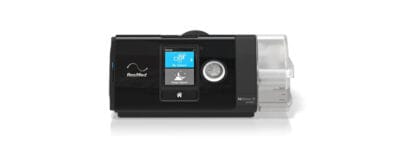
How Do CPAP Humidifiers Work?
CPAP therapy is the leading treatment for moderate to severe sleep apnea. By delivering pressurized air through the night, the therapy can help you return to nights of undisturbed sleep. However, the air can sometimes be dry and irritate the airways. If you are waking with a dry mouth, a sore throat, congestion or irritated nostrils, then consider using a humidifier.
What Are CPAP Humidifiers?
A humidifier adds moisture to the air delivered by your CPAP device. Moistening the air can make the therapy more comfortable for many people, improving the likelihood of compliance.
Most devices come with an integrated humidifier. It is simple to remove and fill, which makes it handy for cleaning, travel and storage.
Humidifiers pull in air from the room, before passing it over a small chamber of distilled water – then the humidified air flows through the CPAP device to the mask you wear while sleeping. This humidified air has the moisture that can make it more comfortable to inhale. The moistened air can be delivered heated or cold depending on your personal preference.
The Two Types of Humidifiers
Most humidifiers will use a heated plate located below the water chamber. This plate warms the water the air passes over, before the moistened air is delivered along the tubing to your mask.
The alternative is a pass-over or cold air humidifier. With this type of humidifier there is no heating element involved. The water within the chamber is at room temperature as the air is passed over and moistened.
The pass-over style was how the original humidifiers operated. However, a heated humidifier can still be used to deliver cold air by switching off the heating plate as not everyone can tolerate heated air. A pass-over humidifier can also be the better option for people living in a more humid climate, as well as for people who require lower pressure settings for their therapy. If you have a pass-over humidifier and want to add heat then you could use heated tubing.
Different Settings
Everybody has different levels of sensitivity. What one person views as the ideal temperature or humidity for the moistened air delivered by their CPAP device, another person could find intolerable. Fortunately, humidifiers can come with the option to alter settings to better suit your personal preferences. These include:
- Altering the water temperature to choose warmer or cooler air. This could depend on your environment, as you may prefer cooler air if you live in a hot climate
- Setting humidity levels according to your treatment plan as well as your personal preference. This can be key as humidity needs to be comfortable in order to better tolerate the therapy.
- Adjusting the temperature of the tubing on some humidifiers, which can be a useful option if altering the humidity setting alone still sees you waking with a dry mouth or a sore throat.
These settings can be altered manually or be adjusted automatically depending on the model of the humidifier. Automatic adjustments allow the humidifier to respond to environmental changes during the night to help maintain a given temperature or humidity level.
Benefits of a Humidifier
The main benefit of using a humidifier is comfort. Moistening the air can make it less irritating, ease congestion and prevent further side effects of CPAP such as nasal inflammation, nosebleeds and sore throats. However, a humidifier is not a one-stop solution for everyone — as we all have our different preferences for how moist and how warm we like the air we inhale.
For instance, a 2002 study reported 47.7% of participants said they received a better night’s sleep using a humidifier, while the remaining 52.3% said they preferred not to use one. However, further studies consistently show that those who use a humidifier report an easing of side effects such as congestion and dry mouth.
Final Thoughts
If you experience congestion, dry mouth or sore throats from CPAP then you may want to consider a humidifier. You can consult with your doctor on the best type of humidifier and the settings to suit your personal preferences. Many people find that delivering the air after it has been heated and moistened can make for a more comfortable therapy.
Sources:



